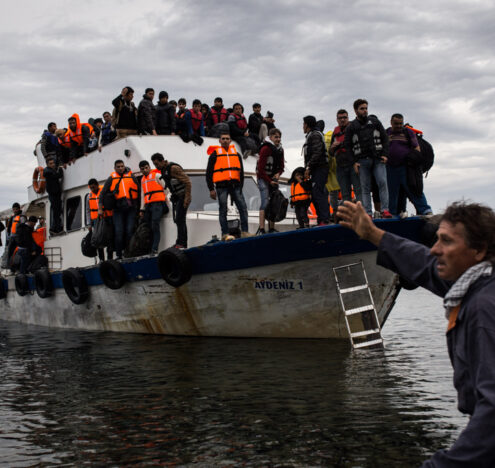This analysis was featured in Critical State, a weekly newsletter from Inkstick Media and The World. Subscribe here.
Northeastern Ukraine is littered with the iron bones of Cold War planning. The vehicles of Russian invasion and Ukrainian counter-offensive — derived from shared arsenals once built in conjunction for an anticipated push west — now lie as wrecks and ruins, the result of weeks of warfare. To the extent that technology has captured attention in this war, it is the drones and missiles of modern origin, applied against older targets, that shape perception.
Is this innovation? Or is it merely the fact that a good drone scout produces useful, shareable combat footage?
In “What is a military innovation and why it matters,” published Mar. 22, 2022 in the Journal of Strategic Studies, authors Michael C. Horowitz and Shira Pindyck tackle the concept of change in fighting wars, both as a way to understand how these shifts happen and how people think about these shifts.
How militaries adapt to new fights, whether with new machines, new social structures, or a combination of new tech and new behaviors, changes the specific realities of war, if not its overall nature.
The authors settle on the definition, “changes in the conduct of warfare designed to increase the ability of a military community to generate power,” which is better explained through an example. The British Navy invented aircraft carriers with the HMS Furious in 1917, but figuring out how to apply “planes launched from a ship” for maximum effect was the product of interwar planning and thinking. In the US, a combination of experiments in the field, war game exercises, and urging by Navy aviators all led to the useful innovation: “the carrier was envisioned as a mobile airfield, rather than a spotter for the battleship.”
Interwar carrier theorizing would matter a great deal for how World War II was fought, though it was not clear until the war was underway how much the range increase from ship-launched planes mattered over the big guns of battleships. The US and Japan both reached similar conclusions about carriers, building from initial British experience, and employed the ships to much greater effect.
Carriers are a high-end example. Capital ships are, after all, capital-intensive. The construction, operation, and employment of a ship crewed by the population of a small town is a massive undertaking. New ideas and tools for warfare have to be within reach of the military undertaking it, and will reflect the means of destruction that a society can muster.
Another innovation considered by Horowitz and Pindyck is the levee en masse, or the conscription that defined first Revolutionary and then Napoleonic France, enhancing through social institution and connection the scale at which labor for war could be brought into use. Conscription also spread the harm from war, ensuring deaths in combat hit families beyond those of a professional soldiering class.
How militaries adapt to new fights, whether with new machines, new social structures, or a combination of new tech and new behaviors, changes the specific realities of war, if not its overall nature. It’s a kind of perspective worth bearing in mind for policymakers who may, in the next few years, have to decide what kinds of battlefield AI or autonomous targeting systems are pursued, drawing on observations from the Ukraine war and theoretical models.
Incidentally, just over two weeks after the paper was published, Horowitz tweeted he had accepted a position as Director of the Pentagon’s new Office of Emerging Capabilities Policy, “shaping defense policy on emerging tech adoption/use.”




















